南昌保利大剧院
Nanchang Poly Grand Theatre
2020年11月,芬兰PES建筑设计事务所受邀参加南昌保利大剧院国际竞赛。在历时数月的激烈竞争中,PES在国内外众多优秀参赛设计单位中脱颖而出,赢得竞赛,成功中标。
PES-Architects was invited to participate the international architectural design competition of Nanchang Poly Grand Theatre in November, 2020. After the intense competition stage which lasted for several months, PES prevailed among the top level designers and won the architecture competition.
南昌保利大剧院,游弋之鱼
提案是项目的主要愿景在建筑形式上的呈现——社区、剧院和景观的紧密结合。设计师为南昌保利大剧院所提议的设计基本原则,是定义一个模糊的边界,将建筑与景观融合在一起。设计将剧院视为一个景观要素而不是一个建筑物来加以处理,进而让人们在其中的行走过程创造出宛如在公园之中的漫步体验。
大剧院地处九龙湖新城,坐落在美丽的九龙湖湖畔,与周边环境有着独特的联系。提案创造了一座由一系列公共客厅组成的“文化和商业的园区”,其为创造知识、经济和社会价值提供了空间框架。项目引入了传统中国村庄类型学的思想,通过中央人行步道将片区分解成几栋建筑并由其贯穿了整个项目,构建了一个可变且有趣的城市空间结构。
总平面设计
大剧院是九龙湖新城未来的标志性建筑,是文化与商业发展的结合体。该片区明确地分为两个独立的区块:一个是为商务商业功能服务的高密度、高效率建筑,另一个则为艺术和文化剧院功能服务。一条中央人行步道贯通了两个区块,从而实现了整个场地之间的连接。
提案本着“文化园区”的精神,创建了一个由各种建筑物、公共广场和绿色空间相互交织而成的网络。这是一个多孔的城市空间,与周围环境相互渗透,构成尺度和性质各异的空间。整个街区完全禁止车辆通行,所有车行交通都在场地外围解决。
在剧院的南侧和北侧分别设置有主要入口及广场。北侧广场作为剧院的集散广场,面向湖水与城市,从东西侧的沿湖步道均可轻松到达,并策略性地与地铁方向的主人流相连。
而南侧的广场则作为日常的休闲广场,将大剧院与商业街区功能相联通,九龙大道还设有一条地下通道与休闲广场相连。剧院南侧入口的巨大帘幕顶篷与大型户外剧场构成对称的形式,创造了一个活跃而有趣的城市焦点。
无论是来办公还是参观,该项目都为访客提供了愉快的体验。空间和功能的布置简明清晰,人们可以沿着中央人行步道从地面层进入各个功能。该建筑以欢迎的姿态邀请人们前来体验,以满足不同人群之间的交流。
场地西侧设有地下停车场入口和装卸通道入口,剧院的下客区位于北侧的南龙盘路上,而VIP下客区位于建筑东侧,与中央人行步道相连。由于场地的地形高差不同,设计对地下空间进行了功能划分:商业区域的停车场完全设置于地下,剧院区域的停车场和剧院服务卸货空间设置在道路标高上。服务卸货交通可以从剧院西侧的道路方便到达,因其设于地面标高,所以更为经济。
形体与立面
剧院的三个主要功能体量宛如由水中游弋之鱼的动势凝固而成,公共人流则自由穿梭其间。
建筑被垂直钢制挂板系统的防火木贴面所覆盖。在外立面上,该系统形成了建筑物的耐候表皮,而在内部中央通道上,此层表皮是艺术性的装饰。在此之上,一系列钢构件支撑起由陶瓷和玻璃面板组成的抗拉表皮,这些面板有着不同透光度,构成了建筑立面的外部装饰层,它不仅起到了遮阳的作用,而且赋予了建筑迷人的不规则几何形状和类似面纱般的外观。
这一由陶瓷和玻璃砖组成的像素化矩阵,为建筑物创建了整体的“中国白”色调,也是在向当地陶瓷制作传统致敬。远观时,立面赋予建筑物同质的特征,但随着观察者逐渐接近建筑,建筑外观也会展露出更多层次感。立面纹理在加强建筑物体量感的同时,扭曲的像素块从内到外创建了丰富的编织感。这样精心设计的陶瓷玻璃幕墙使如此大体量的建筑能够变得轻盈而开放。
结构与材料
建筑是钢筋混凝土结构,其中所有材料都会复合使用,以发挥其最佳特性。垂直结构由现场浇注的巨大的钢筋混凝土承重核、防火钢柱和支撑结构组成。混凝土用于一般区域,而钢结构则用于大跨度区域,如大剧院的屋顶。
主剧院建筑的外形是不规则的,但是结构和立面却是系统化的:地下停车场为承重结构制定了网格;较高的楼层跨度较大,梁和桁架结构会连接到柱子上;支撑系统还包含了剪力墙。该系统是此类建筑最经济的结构系统。尽管外墙采用双曲线形式,但其几何形状完全基于直线,这也意味着外墙可以用清晰而经济的结构实现。一个地下停车位的规则柱间距约为8.4米,这也是最经济的结构系统,可满足停车场的大量需求,并且还可以减小结构厚度,以换取良好的净高度。在中央通道和剧院门厅外立面覆层中,设计使用了防火贴面染色木材,这是一种温暖,耐用且生态的建筑材料。设计师希望在所有公共大堂、门厅和剧院的墙壁上尽可能使用具有不同的颜色和纹理的工艺竹子,让建筑内部更有中式的氛围。
剧院内部
文化中心的生命力在于其适应各种功能和用户的能力,因此各功能被设置于一系列独立的体量中,向人们开放的公共功能则设置于地面空间。剧院的功能分为三个部分:大剧场、多功能剧场及教育和展览功能。设计使其在必要时,或在一天的不同时间中可以彼此完全独立地运行。
剧院的中心步行街覆有防火木饰面,创造了艺术中心兼具功能性、交通性及社会性的聚焦空间。它把剧院与九龙湖公园及商业街统一连接起来,还连接了剧院的主要功能区域:大剧场、多功能剧场、咖啡厅、教育和展览空间。通过窗户开洞,人们可以看到中心步行街的人群。步行街周边设有小型商店、咖啡厅和展览空间。
多功能剧院的后台也可向其开敞,使得快闪舞台和表演可以成为街道组成的一部分。内含1612座的大剧场是根据古典的马蹄形剧场建筑平面布局来设计的,有两层楼座。剧场室内条带形的形态灵感来源于九龙湖畔层层叠叠的岸线形态。曲线的条带形是设计中的一个控制性要素。每个楼座挑台前缘都精确地沿着这些1米高的水平条带展开。这些条带扭转着,形成声学所需要的表面形态,为后排座席区的观众提供完美的反射声角度。
室内表皮的建造是相对简单的,因为这个形态是基于单一的表皮形态,经过处理的木材面板通过常规的建造方式就可以实现设计效果。观演厅的顶棚也使用了条带状的主题,将面光桥整合在其中,形成了整个观演厅一个整体和谐的视觉效果。观演厅前厅环绕着公园和湖泊。窄长的主休息厅标高将观众引导进入观演厅,进而快速寻得各自的座位。池座从首层平台层进入,这里也设置了贵宾区,贵宾可以从东侧室外地坪进入平台下的贵宾入口门厅,再抵达位于首层平台层的贵宾休息室,还可以从室外台阶直接进入首层平台层。大剧场的布景装卸区位于平台下,与货车入口处的街道标高较为接近。
450座的多功能小剧场被设计为一个真正实验性的“黑匣子”剧场。这意味着它对装饰造型的重视度降低,而更多地注重使用的灵活性。观演厅是一个不设楼座的矩形。陡峭升起的座席区提供了良好的望向舞台的视线,这些座席可以被完全收回,形成一个地面全平的观演厅,同时舞台还可以被降低到观众席楼座高度上。
顶棚是可灵活使用的缆线网,可灵活布置灯光及吊点,以便灵活悬挂帘幕或是其他任何在整个大厅中需要悬挂的物品。侧台可以使用可移动与旋转的帘幕完全封闭起来,从而使这个观演厅成为一个非常整洁的空间。
室内的建筑设计基于声学方面的想法,采用可变的墙面。大部分装饰墙面板同可旋转的侧舞台幕帘一样,也可以被转动,从而根据使用功能需要为观演厅创造出多样化的视觉和声学效果。小剧场门厅的使用也非常灵活,除了用于文化表演外,它也可以用于展览或其他类型的商业表演。剧院的舞台也向中央大厅开放,可以在这里组织快闪活动、演讲和小型表演。小剧场舞台的布景装卸是在平台层之下的标高层进行的。
可持续建造与能源设计
真正可持续的建筑是经久不衰的,不仅体现在建造技术上,还体现在建筑设计上。高质量的材料和细节及不过时的设计方法,将确保项目的长寿命和低维护成本。
剧院配备一个热回收系统,该系统将运用连续冷却空间所产生的废热继续加热交通空间,在需要时将这些区域调节为半室外环境。这样做显著地减少了外表皮的表面积,同时提高了整体能源效率。在温暖的季节,建筑还可以打开中央通道的天窗,以实现自然通风,自动遮阳装置会避免内部温度过热。通过建筑手段实现外部遮阳和减少内部冷却需求是该项目的主要设计灵感之一。让美丽的景色和自然光线穿透建筑物也很重要。经过日光分析后,考虑到不同季节的日照量及街区周围未来发展的阴影效应,立面的每个部分都进行了日照量等级评测,再相应地调整外部表皮的透明度,从而创建与周围环境密切相关的立面纹理。收集雨水来为浇灌场地中的植物,是一种可以降低高峰用水量,创造更好空气质量,同时为屋面降温的方法。人们可以到达屋顶的部分区域,这将产生一个有趣的屋顶花园景观,游客和工作人员也可以自由探索并欣赏九龙湖公园的风景。通过利用现场的自然能源(地热能和太阳能),可以增强建筑物的能源独立性。地源热泵与地桩相结合,可为建筑物提供加热和冷却的能量。建筑物上方的天空提供了光伏能源,以运行热泵并满足建筑物的其他电力需求。该技术还可以避免在屋顶安装过多的暖通系统,从而使屋顶立面变得舒适整洁。
项目名称:南昌保利大剧院
项目时间:2020年11月至2024年9月
项目状态:国际邀请竞赛,中标项目,于2024年9月30日开幕
项目面积:81146平方米
项目类型:剧院
项目客户:南昌保利集团有限公司
项目地点:南昌九龙湖新城
设计团队:Tuomas Silvennoinen, Jyri Eskola, 赖林莉,官晓晶,窦剑,林建强,李岳洋,徐紫阳,Willem Barendregt,Juho Jääskeläinen
Nanchang Grand Theatre, three fish in a pond
This proposal is a demonstration in architectural form of one of the key visions for NANCHANG THEATRE AND ART CENTRE-Project: the close integration of community, theatre and landscape. The underlying principles of design for the NANCHANG ART CENTRE has been the definition of a blurred boundary that blends the building to the landscape, the treatment of the theatre not as a building but as a landscape and the creation of a spatial organization that allows for an impression of walking along a garden path.
Situated at the boarder of the beautiful lake of Jiulong-lake near and next to the developing new area of South New City, the Nanchang Theatre and Art Centre forms a unique relation with its environment. Our proposal creates a ‘cultural and commercial campus’, a series of communal living rooms providing the framework for the creation of intellectual, economic and social value. Borrowing its typological idea from traditional Chinese villages, the project programme is broken into several buildings connected by a central passage that traverses the project in its entirety, building a variable and interesting urban composition.
MASTERPLAN
The Nanchang Theatre and Art Centre is a future icon in the new city development zone, an entity of culture and creation combined with business development. The project is clearly divided into two distinctive areas: high density, high performance buildings for the commercial functions of the programme, and another for the art and cultural theatre functions. A central pedestrian passage is defined through the programme masses, allowing for connectivity across the site.
In the spirit of a ‘cultural campus’, the design creates an intertwining network of various functions, buildings and public plaza and green spaces. The typology of the proposal creates a porous urban space that complements the surrounding context, creating urban spaces of variable scale and nature. The whole block is fully car-free, with all car traffic limited to the perimeter of the site.
Principal entrance and activity plazas are formed on both south- and north side of the theatre. The southern plaza is a more formal entrance and drop-off plaza. Principal pedestrian entrance squares to theatre opens to south, faces the city and is easily accessed from river walk in both east and west. The use of the metro is promoted by strategically connecting the main metro walkway to the common facilities.
An everyday entrance square to theatre is formed on the north side, connecting the project with commercial functions. Bicycle traffic is promoted by creating bicycle lanes through the area, and with a separate underground bicycle garage. Together with the large roof canopy of the main entrance and the large outdoor auditorium, a formal pair to the architecture of the theatre, an active and interesting urban focal point of the design is formed.
The project offers the visitors the block offers a clear and pleasant experience, whether they are there for business or just to experience the exhibitions. The spaces and functions are arranged clearly and they are all accessible from the ground floor plane, along the same central passage. The architecture encourages visitors to come in and to experience the public areas, and enables meetings between different populations using the project.
Passenger car drop off for offices and commercial is accessed from west road, which also holds access for underground parking and loading. The drop off and pick-up for theatre is located on Jiulong Avenue, while a specific VIP entrance is located on Nanlongpan-road, all linking to the central corridor passage. Because of the differing topographic conditions on the site allow for functional division of underground spaces: a fully underground parking for commercial areas, and a street level accessible parking and service level for the theatre. This service level can be easily accessible from street level on the theatre west road, and allows for economic way of solving the loading and service traffic of the theatre.
FORM AND FACADE
The form of the loosely grouped masses resembles three fish in a pond, around which pedestrian traffic can flow freely.
The three principal programmatic masses of the theatre will be clad in a fire-proof wood veneer laminated vertical steel cassette system. On the outer facades this system forms the weather-proof skin of the building. On the inner central passage, this layer is purely decorative. On top of this, a series of steel pillars support a tensile skin of ceramic and glass panels, with a varying degree of permeability. These form the outer, decorative layer of the building facade that functions as a sun shading device, and gives the building its attractive amorphic geometry, and veil-like appearance.
The outer veil of the building is be with a pixelated matrix of ceramic and glass tiles with varying degrees of, translucency and opacity, creating an overall China White colouration to the building. The intention is that the facade gives the building a homogenous character, when viewed from distance, but at the same time reveals a greater level of complexity as the viewer approaches. The facade patterns are intended to represent the building as a volume, while the distorted pixel map creates a rich tapestry from inside and out. The architecture is characterised by a sense of lightness and openness. The large building mass appears weightless and elegant due to the delicate ceramic-glass facade.
STRUCTURE AND MATERIALS
The building frame is a hybrid structure of steel and concrete, where all the materials are used in combinations which utilize their best natural properties. Vertical frame consists of load bearing in-situ vast reinforced concrete cores and fire-proofed steel columns and bracings. Floor plates are built as joint steel-concrete decks, with roof elements built as prefabricated timber elements.
Main theatre building has amorphic form, but the frame and façade are systematic: Underground parking floors locate the grid for load bearing structures. Upper floors have wide spans and beam/truss structures are connected to grid columns. The bracing system consist shear walls and diagonal braced steel frames. This system is most economical structural system for this kind of building. Despite the double curving form of the facades, the geometry is purely based on straight lines, which translates into a clear and economical construction.
One subterranean parking levels have regular column spacing of approximately 8.4m. This system is the most economical structural system to meet the big amount need of the parking areas. And it can also reduce structure thickness to have a good clear height.
The use of fire-proof veneer stained wood in the central passage and theatre foyers façade cladding is a warm, durable and ecological solution. Bamboo provides a particularly Chinese solution as the material for the interior finishes. We suggest to use Chinese cultural material, technological bamboo, as much as possible with different colors and textures in all public lobby, foyer and auditorium walls.
OPERA HALL
The realization that the vitality of the culture centre depends on its ability to accommodate a rich variety of uses and users lead to the arrangement of the facilities as a series separate masses with public functions on the ground level open to all.
The programme of the theatre has been arranged into three functional masses; grand theatre, multifunction theatre and education and exhibition functions, designed so that they can be run entirely independent from each other if necessary, during different times of the day for example. The central passage, clad in fire-proof wood, creates the functional, circulatory and social focal point of the art centre. It connects the theatre to the Jiulong lake park, and to the commercial area. It also links the primary functions; the grand theatre, multifunction theatre, coffeehouse, education centre and exhibition spaces together.
Windows to progamme functions are cut to the wood passage, providing glimpses of activities to be seen as one is walking. The internal plaza is framed by small shops, cafe and the exhibition spaces. The back stage of the multifunction theatre can open to this area, and allow for pop-up events and performances.
The 1612 seat Opera Hall is designed according to classical horseshoe opera building layouts, with two rear balconies. The banded shapes of the opera interior are inspired by the layered topography of the lakeside shores of the Jiulong lake-system. The shapes of the curved bands are a dominating design element. Each balcony front is following and exact horizontal placement of these 1m high stripes. The stripes are twisting to add the required acoustical shaping to the envelope, providing for optimized reflection angles of the sound back to the audience. This reflection is done by both, first order reflections from the twisted timber surfaces, and second order “down-kicking” reflections from underneath the protruding bands and balconies.
The construction of the interior surfaces is relatively simple, as the forms are only based on simple surface geometry, so that standard construction and treated wooden boards can be used to reach the suggested shapes. The ceiling of the hall is also using the banded theme, to integrate the lighting bridges, and to form a unified image of the entire hall.
The foyer of the opera is embracing the park and lake view. A narrow main foyer levels are leading the audience to their seats. The main stalls are accessed from the foyer levels on the ground floor, which are same time connected to the VIP areas, and which can be accessed from the ground floor as well as from basement, and the designated VIP lobby. The Opera Hall stage is loaded from below the raised podium level, directly from street.
The 450 seat multifunctional small theatre is designed as a true, fully experimental“black box” theatre. This means it is reduced in decorative shapes and with focus on flexibility. The shape is rectangular without side balconies. The steep sloped seating provides for a maximum of visibility of the stage and can be fully retracted for a fully flat room. Also the stage can be lowered to the audience floor level.
The ceiling is a flexible cable wire ceiling, to allow for free placement of lighting and point hoists for flexible suspension of curtains or other items in the entire hall. The side stages can be closed off elegantly with movable and rotatable leg curtains, to turn the room into a perfectly shaped clean box.
The room architectural design is based on the acoustical idea of variable wall surfaces. Together with the rotatable side stage leg curtains a large part of the wall panels can also be turned, as to create a diverse look and acoustics to the hall, just as desired by the user. The wall and side stage panels have a hard acoustic surface on one side, and on the other side they have soft acoustically absorbing material. This textile side is designed to feature local cultural pattern and provides a pleasant contrast to the hard and flat timber surfaces.
The usability of the small theatre foyer is also flexible. Besides the cultural shows it could be used for exhibition or other type of commercial shows. The stage of the theatre opens also towards the central lobby, allowing for pop-up events, lectures and small shows. The Small Theatre stage is loaded from below podium level.
SUSTAINABLE CONSTRUCTION AND ENERGY
A truly sustainable building will be one which is long lasting, both technically, but also architecturally. High quality materiality and detailing, as well as the timeless design approach will ensure a long life-span and low maintenance for the project.
The theatre will be equipped with a heat recovery system where waste heat from continuously cooled spaces is utilized for heating of the circulation spaces, to condition these areas to half-clime conditions when needed. This significantly decreases the surface area of the exterior skin and improves overall energy efficiency.
External sun shading and limiting the need for cooling by architectural means is one of the main design inspirations of the project. It is also important to allow for beautiful views and natural light to penetrate into the building. After a solar analysis, taking into account the solar exposure of different seasons and the shadow effects of the future developments around the block, each part of the façade was given a solar exposure rating. Then the opacity of the exterior skin is adjusted accordingly, creating a façade pattern which directly reacts to the surroundings.
Rainwater is collected to a system which utilizes it to water the plants on the roof, creating a way to slow the peak water flow, and to create better air quality and a natural way to enhance the cooling of the roof. Parts of the roof can be made accessible, which would allow for an interesting rooftop garden landscape, which the visitors and staff are free to explore and opening views towards the Jiulong lake park.
It is possible to intensify energy independence of the building by taking advantage of natural energy sources on site: geothermal and solar. Ground source energy drills, combined with the foundation piling, provide for the heating and cooling energy of the building. The sun provides for the photovoltaic energy to run the heat pumps. This technology will also avoid excessive HVAC machine installations on the roof top, resulting in a pleasant and clean roof façade.
Project Name: Nanchang POLY Grand Theatre
Project Time:November, 2020- September, 2024
Project Status: Invited International Competition/Winner/ Opened on September 30, 2024
Project Size: 81146 m2
Project Program: Theatre
Project Client: Nanchang Poly Group Corporation Limited
Project Location: Jiulong Lake New City, Nanchang
Designer Team: Tuomas Silvennoinen, Jyri Eskola, Linli Lai, Xiaojing Guan, Jian Dou, Jianqiang Lin, Yueyang Li, Ziyang Xu , Willem Barendregt, Juho Jääskeläinen
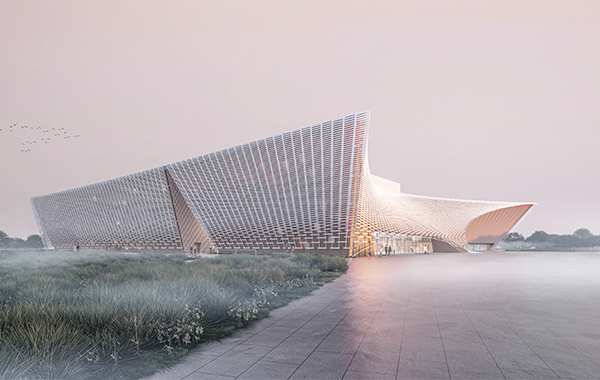
南昌保利大剧院
Nanchang Poly Grand Theatre
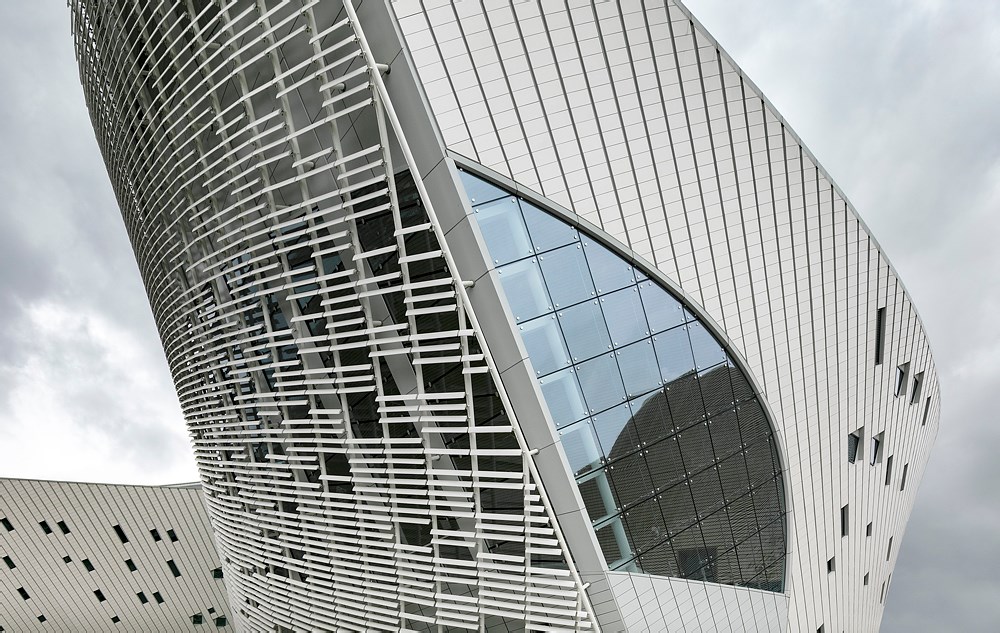
福州海峡文化艺术中心(SCAC)
Fuzhou Strait Culture And Art Centre

无锡大剧院
Wuxi Grand Theatre
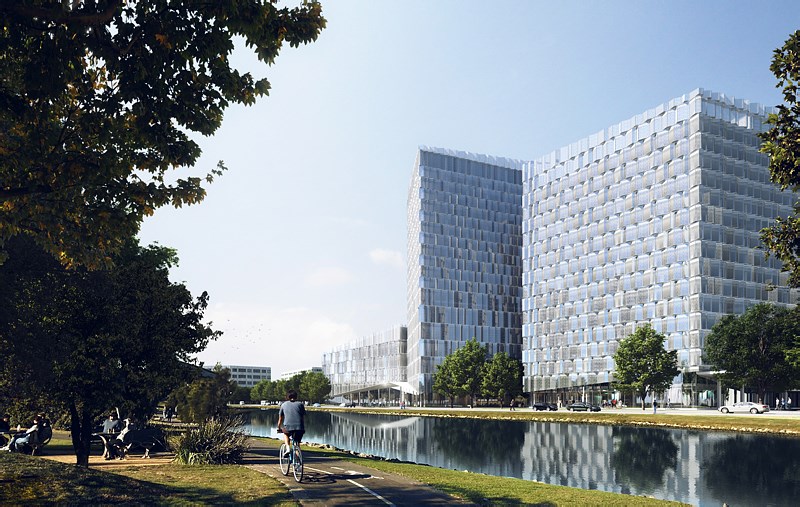
中芬合作交流中心
Sino-Finnish Cooperation and Communication Centre
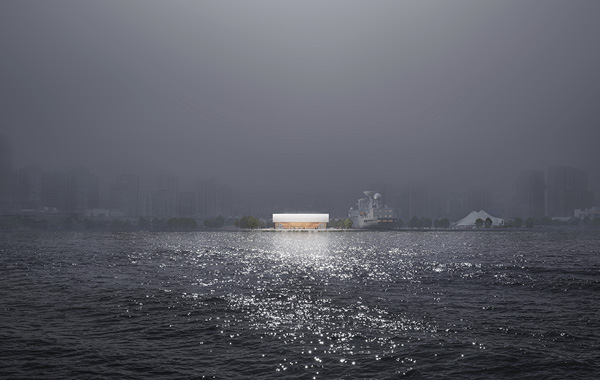
上海潜艇博物馆
Shanghai Submarine Museum
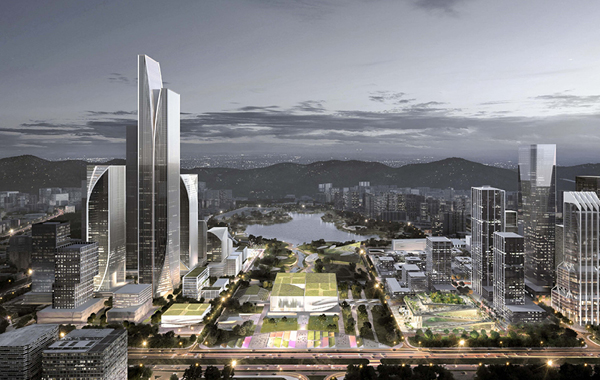
国际演艺中心
International Performance Centre
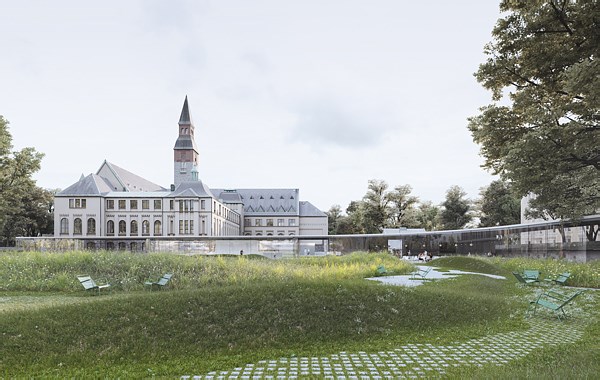
芬兰国家博物馆扩建建筑 (三庭院)
The National Museum of Finland Extension (Uusi Kansallinen)
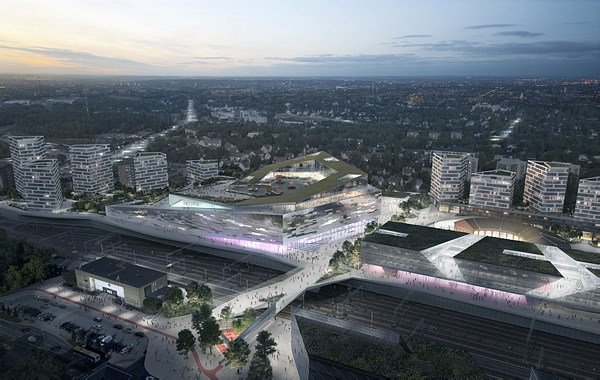
芬兰图尔库市多功能大厅
Turku Multifunctional Hall
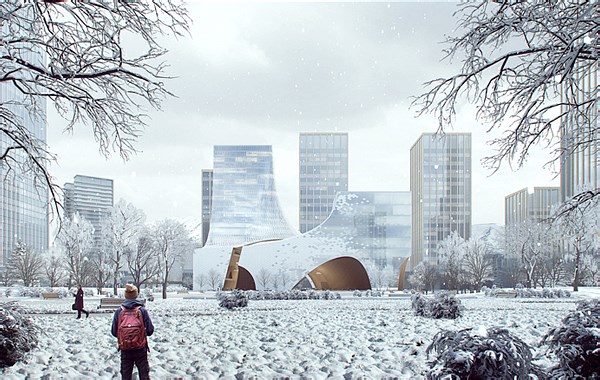
成都城南文化活动中心
Chengdu Culture Center
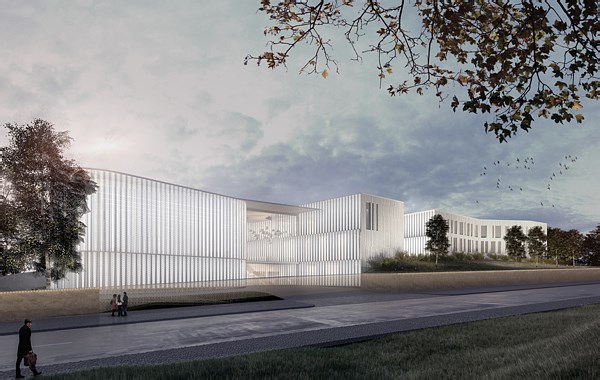
沙特阿拉伯大使馆和员工公寓
Helsinki Saudi Arabia Embassy
扫描二维码分享到微信